.png)
Oxygen concentrators are a lifeline for many respiratory patients. Those suffering from chronic obstructive pulmonary disease (COPD) or cystic fibrosis (CF) can experience significant relief from symptoms like coughing, wheezing, chest pain, and shortness of breath by using supplemental medical oxygen and following a strict diet and exercise routine.
But oxygen therapy isn’t the same for everyone. If you have mild stage 1 COPD you may only need to use your oxygen tank or oxygen concentrator at night or while exercising. However, if you have severe stage 4 COPD, you may need to use your oxygen therapy device 24/7. Believe it or not, another factor that affects how often you use oxygen is where you’re located.
Denver got its name “the Mile-High City” for a reason; it’s about 5,280 feet above sea level. As you likely know, the higher you go in elevation, the thinner the air gets and the less oxygen you have to breathe. This is known as ‘hypoxia,” the same term that’s used to describe a lack of oxygen in your blood.
So what does this mean for oxygen patients? Are they not able to travel to places with a higher altitude like Denver?
Not exactly… but it does mean that they need access to reliable oxygen machines that won’t give out when they need them the most.
Whether you’re just visiting Denver for the Holidays or you’ve lived here your whole life, read on to learn about the best place to buy a medical oxygen device in the Denver area.
About LPT Medical
As a veteran-owned company, the respiratory specialists at LPT Medical know what it means to serve the community with an unrelenting commitment to quality and dependability. Despite being a relatively new oxygen retailer, LPT has quickly made a name for itself as one of the top portable oxygen retailers in the Denver area.

Unlike other retailers which are mainly concerned with reaching sales goals, LPT is very customer-focused. Rather than trying to penny and dime every patient they contact, the respiratory specialists at LPT strive to get portable oxygen concentrators in the hands of everyone who wants and needs them.
Industry-Leading Customer Service
Let’s face it, between speaking with your doctor and pulmonologist, reading about your respiratory condition, and being exposed to the hundreds of medical oxygen units on the market, you probably don’t feel confident in choosing the right oxygen concentrator. You want what’s best for your health, but you also don’t want to spend a fortune if you don’t even know what you’re getting.
What’s more, you’ve probably spent a fair amount of time dealing with Medicare or private health insurance companies who refuse to provide you with the medical oxygen you need. In all honesty, these companies make their paycheck based off how little they can help you. If by some chance you are able to convince them to provide you with oxygen, it will almost always be the bare minimum.

With seemingly everything and everyone working against you, you’ve probably lost hope of ever finding the right medical oxygen device. However, if you decide to get in touch with a respiratory specialist at LPT Medical instead, you’ll find that getting an affordable, high-quality portable oxygen concentrator is much easier than you thought.
LPT Medical prides itself on its industry-leading customer service. Rather than being connected with an unreliable representative, LPT Medical will assign you a respiratory specialist who is trained to uncover the unique needs of each oxygen patient and align them with a medical oxygen device that will serve them best. The best part of all is that you ever need help with anything related to your oxygen concentrator or oxygen therapy, you can always reconnect with your respiratory specialist.
.jpg)
The oxygen therapy industry is a difficult one to grasp because there are so many different facets to consider. First and foremost, you need an oxygen machine that meets your oxygen requirements. Once that’s accounted for, your respiratory specialist will help you compare the weight, battery life, and size of each unit on the market. Throughout the process, you can always feel free to ask any questions or address any concerns that you may have.
Trusted Brands
Unfortunately, scams are all too common in this day and age. Given the popularity of online shopping, it’s easier than ever for someone to hop online and pose as someone that they’re not just to steal someone’s identity or hard-earned money. To ensure that you have no doubts about the quality of the product you’re receiving, LPT Medical only distributes oxygen equipment from the most trusted brands in the industry.
Inogen
Inogen was one of the first companies to pursue pulse flow technology back in the early 2000s. They dreamed of being able to provide high-flow oxygen patients with a lightweight, small, and durable portable oxygen unit that also meets their high oxygen demands. As a company, they believe that no oxygen patient should be homebound and that chronic respiratory disease should not prevent anyone from getting out and doing the things they love to do.
But Inogen didn’t become a trusted brand on hopes and dreams, they have a long track record of success with their “G” series of portable oxygen concentrators. Ever since the release of the Inogen One G1 around two decades ago, Inogen has been breaking boundaries in the medical oxygen field. Oxygen patients, medical professionals, and medical equipment retailers eagerly await the release of new Inogen products because they know they will be a hit.
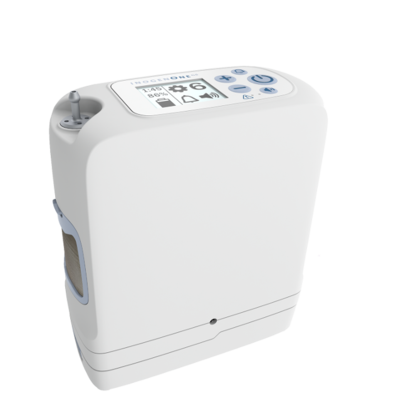
With 2020 right around the corner, The Inogen One G5 is currently the undisputed king of portable pulse flow oxygen concentrators. This machine weighs just 4.7 pounds making it one of the lightest POCs on the market. It also has the highest oxygen output of any pulse flow POC affording you 6 different flow options based on your needs. If you’re concerned about how much time you’ll have outside the house, you’ll be happy to know that the Inogen G5 gets up to 13 hours of battery life using the double battery (sold separately).
{{cta('fa8abc2a-1e88-4fa3-82fd-1cb5b9ed43b2','justifycenter')}}
Respironics
Respironics was founded by Gerald E. McGinnis in 1976. This new company primarily focused on sleep technology like CPAP and BiPAP machines. Respironics quickly earned a name for itself as one of the primary retailers for sleep apnea products and they eventually began to incorporate oxygen therapy devices into their lineup. A merger with a multinational Dutch company, Philips in 2007, allowed Respironics to reacher a larger customer base than ever before.
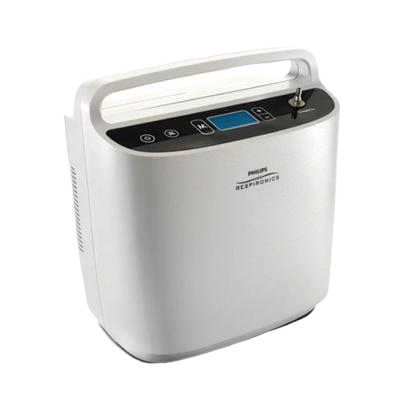
While Respironics is mainly known for their CPAP and BiPAP machines, they’ve stressed the importance of treating overlap syndrome — the result of having both COPD and sleep apnea. With their CPAP and BiPAP compatible oxygen concentrators, COPD patients are able to experience healthy and restful sleep without worrying about their respiratory condition.
AirSep
AirSep got its name from the term “air separation.” This refers to the separation of air into its distinct parts: primarily nitrogen and oxygen. Since the 1980s, AirSep has focused on manufacturing high-quality air separation equipment like oxygen concentrators. In 2014, it was acquired by Chart Industries, which had previously acquired SeQual Technologies, another notable oxygen concentrator brand offered by LPT Medical.
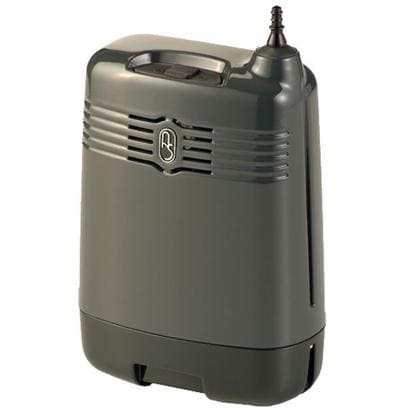
AirSep is primarily known for creating the lightest portable oxygen concentrator ever produced: the AirSep Focus. Despite its small form factor, the AirSep Focus provides two pulse flow settings and a battery that can last over 3 hours on one charge. This medical oxygen device remains is the preferred option for many COPD patients who also suffer from back pain and other mobility issues.
{{cta('b59df0c1-c4de-47a8-8e1c-0d33d4b414aa','justifycenter')}}
Options to Fit Your Lifestyle
Aside from working with companies that are reliable and established, LPT also offers specific products and product lines that are the most useful and reliable for oxygen patients. Oxygen concentrators were invented in the 1970s but to this day, oxygen manufacturers continue to refine them by improving battery life, reducing their size and weight, and increasing their oxygen output. It’s impossible to say where oxygen technology will be five or ten years from now, but from the way it’s going, it’s hard to imagine anything other than positive changes.
.jpg)
Home Oxygen Concentrators
A home oxygen concentrator is an oxygen device you’d likely find in an oxygen patient’s home pre-2000. While home oxygen concentrators have largely been replaced with portable oxygen concentrators, they still serve an important role for oxygen patients all over the world. What’s more, they’re still frequently used in hospitals as a safe, cost-effective, and reliable source of oxygen.
One of the most notable benefits of home oxygen concentrators is their high oxygen output compared to portable units. Since these oxygen machines need to be plugged into the wall to run, they’re able to put out 5 to 10 LPM of continuous flow oxygen. For patients with severe stage 4 COPD, this will be ideal.
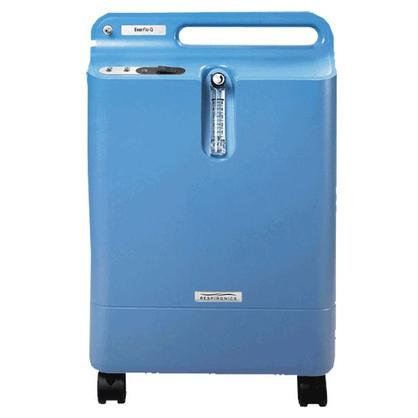
Another benefit of home oxygen concentrators is that you never have to worry about swapping out or refilling oxygen tanks. If you’ve used either oxygen tanks or liquid oxygen tanks in the past, you know how much of a struggle it can be. Alternatively, home oxygen concentrators are “set it and forget it.” Simply turn the device on to your desired continuous flow setting and you’ll be able to use it, day and night, without having to mess with it.
Portable Oxygen Concentrators
There are two different types of portable oxygen concentrators: pulse flow units and continuous flow units. Continuous flow portable oxygen concentrators work the same as home oxygen concentrators in that they provide a constant stream of oxygen through the nasal cannula. Pulse flow units, however, have a built-in delivery system that only emits oxygen when you inhale. Each bolus (dose) of oxygen is timed perfectly so that you receive the most amount of oxygen. In many cases, continuous flow concentrators also offer a pulse flow option.

In this day and age, portable oxygen concentrators make up a large part of the oxygen market. Due to the significant strides that oxygen manufacturers have made with pulse flow technology in the past several decades, respiratory patients are putting aside their home units for something that’s portable and affords them the freedom they need to live life on their own terms. While home oxygen machines and continuous flow machines are less popular, LPT still offers them for patients who require more oxygen.
CPAP and BiPAP Machines
According to sleepapnea.org, about 22 million Americans suffer from obstructive sleep apnea (OSA). And about 15 percent of COPD patients also have OSA according to the COPD foundation. Unfortunately, many people who suffer from this overlap syndrome don’t get the help they need. Respiratory patients are often surprised to learn that oxygen therapy and either CPAP or BiPAP treatment can be used simultaneously. Most CPAP machines even have a port on the device where you can hook up an oxygen machine.
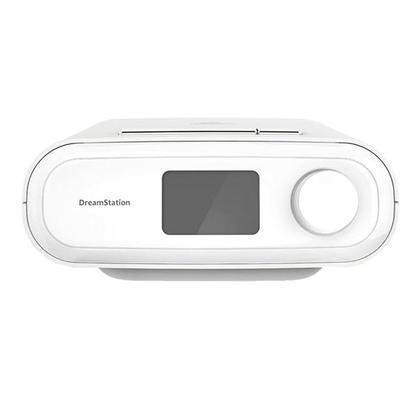
LPT Medical sells a number of heavy hitters like the Respironics Dreamstation Auto CPAP machine and the ResMed AirSense 10 with a heated humidifier built in to prevent nasal irritation. These machines will keep your airways open and allow you to breathe easily all night without interruption. Many of these devices also have advanced technology like Bluetooth connectivity, automatic altitude adjustment, and SensAwake technology which adjusts pressure treatment as your sleep pattern changes.
Oxygen Accessories
Another great luxury of this day and age is being able to customize everything to our liking. Portable oxygen concentrators like the Inogen One G5 are great on their own, but once you learn about the host of high-quality oxygen accessories you can buy for it, you’ll be amazed at all the things you can do.

Carrying bags are one of the most important accessories LPT Medical has to offer. While most POCs come with a carrying case of some sort, you can also purchase bags that match your lifestyle. For example, the Inogen One G5 backpack offers plenty of carrying space all while holding your G5 oxygen concentrator securely in place and fully usable. On the other hand, you could use something like the G5 custom carrying case which is best for short trips.
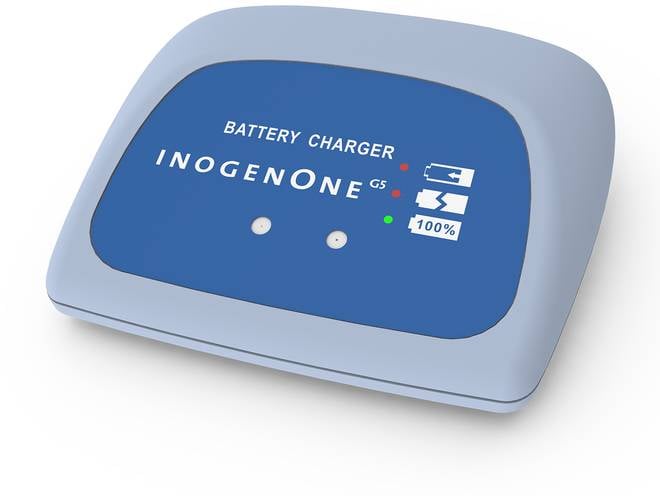
Before you purchase an oxygen concentrator, be sure to check out what other accessories LPT Medical has to offer. For units like the G5, you’ll be able to purchase an external battery charger which can be used to charge your batteries separately from your G5. Additional high-capacity batteries can be purchased as well as DC power adapters which allow you to charge your portable oxygen concentrator in the car.
FAA Approved Devices
Many people reach out to us concerned that they will never be able to fly again once they start oxygen therapy. Fortunately, this couldn’t be farther from the truth because the majority of our portable oxygen concentrators are approved for in-flight use. Several decades ago, when oxygen tanks were the only type of mobile oxygen, COPD patients were not able to fly because tanks are too dangerous and bulky to carry onboard an airplane.

Modern portable oxygen concentrators, on the other hand, contain no compressed oxygen meaning there’s no threat of them exploding or catching fire. Pulse flow units like the Inogen One G3 are so small and lightweight that you can put them under the seat while you’re taking off and landing. It’s a little more difficult to travel with a continuous flow portable oxygen concentrator because they’re bigger and heavier, but most of them are approved by the Federal Aviation Administration as well.
Approved for Use at High Altitudes
Altitude sickness also called “acute mountain sickness” is a condition that results from sudden exposure to a low oxygen atmosphere which can lead to nausea, shortness of breath, and lightheadedness. Unfortunately, people with COPD or cystic fibrosis are even more susceptible to this condition unless they have a reliable source of oxygen.

The one downside to oxygen concentrators is that they draw in surrounding air in order to remove the nitrogen and output pure oxygen. But if the air coming in doesn’t have enough oxygen, it’s not doing you any good. However, POCs like the Inogen One G3, G4, and G5 can operate up to 10,000 feet above sea level. Some can operate at even higher altitudes like the SeQual Eclipse 5 which works up to 13,123 feet above sea level. In other words, if you’re visiting Denver or you live here, you’ll have no problems using your POC. However, if you’re traveling into the mountains, you’ll need to ensure you follow your user manual guidelines.
{{cta('43b79c5e-6bd6-4f02-ac27-2d038d20c146','justifycenter')}}
Conclusion
Choosing an oxygen concentrator is not always easy. Every oxygen patient has different needs, wants, and expectations, so it’s best to speak with a specialist who can align you with the exact product you’re looking for. At LPT Medical, we take pride in offering a variety of options no matter your oxygen demands. What’s more, we offer plenty of oxygen accessories so that you can customize your oxygen experience and live life on your own terms.
We’re conveniently located in southeast Denver near the Denver tech center, so if you ever need technical support for your POC or you want to view the units before you purchase one, feel free to come visit us. If you have any questions about anything you’ve read online, please don’t hesitate to give us a call or stay tuned to our blog for more helpful information.


 So we can find the best portable oxygen concentrator for your needs!
So we can find the best portable oxygen concentrator for your needs!







